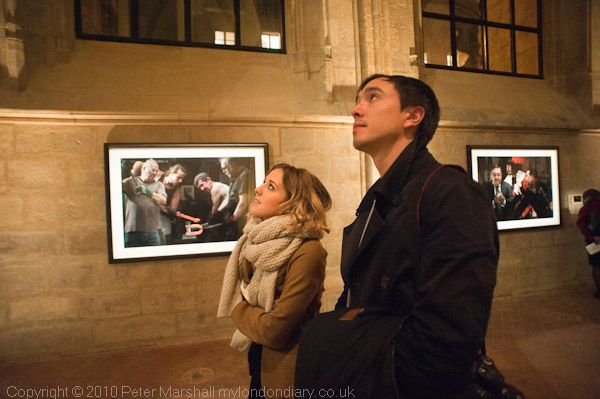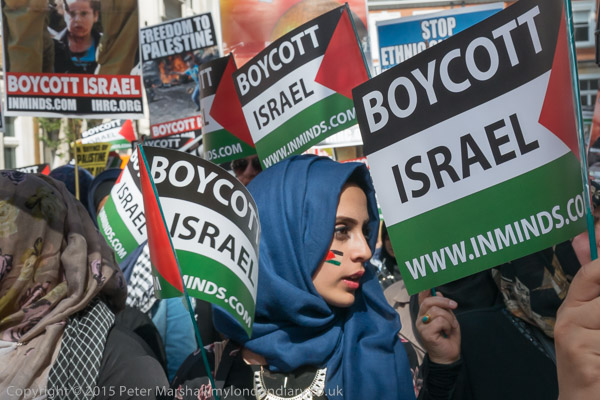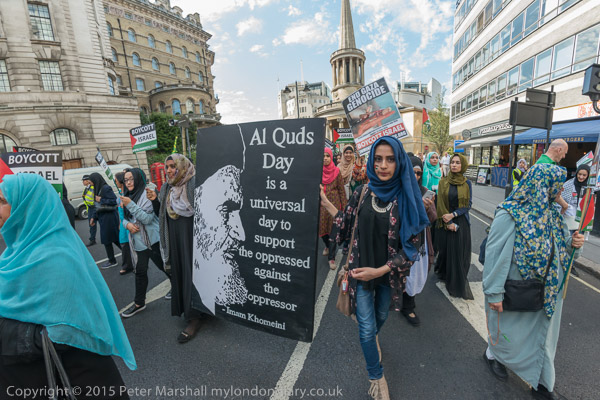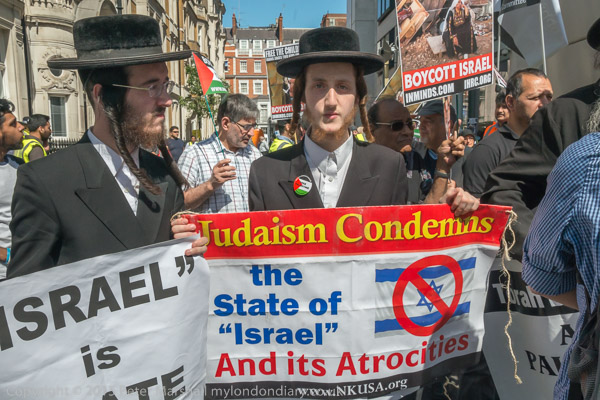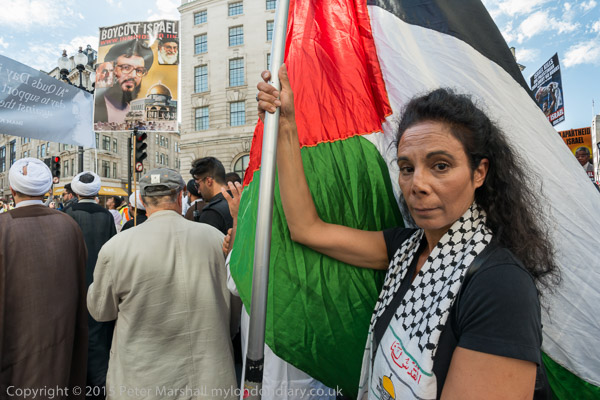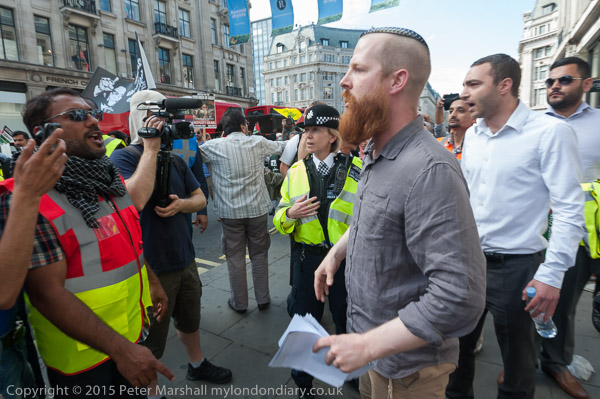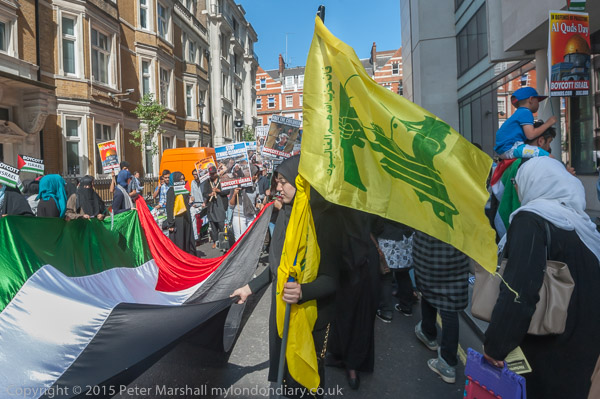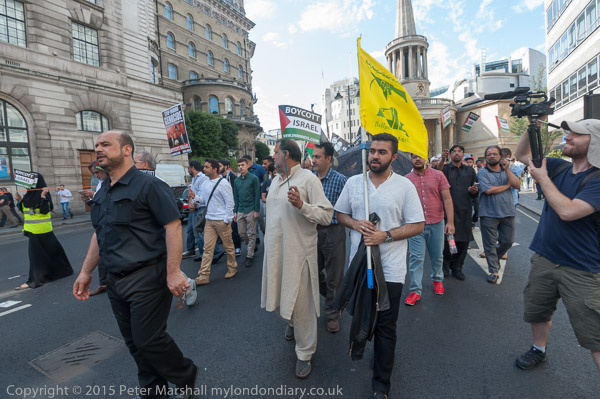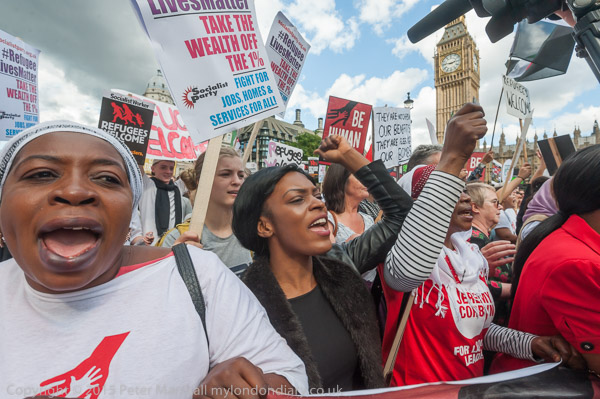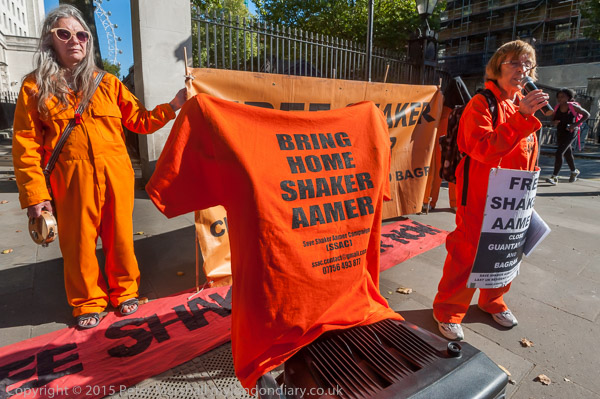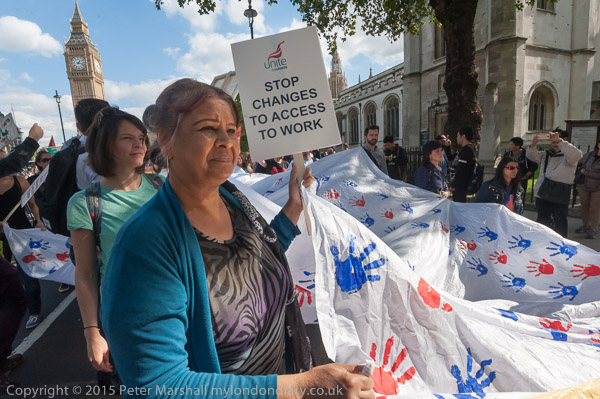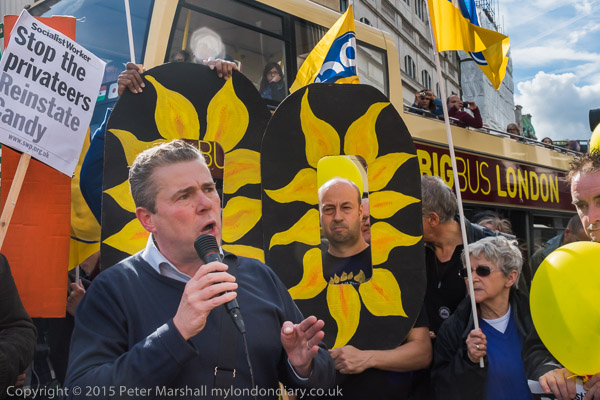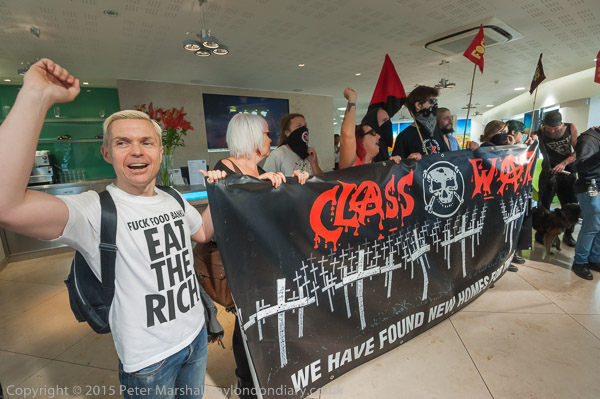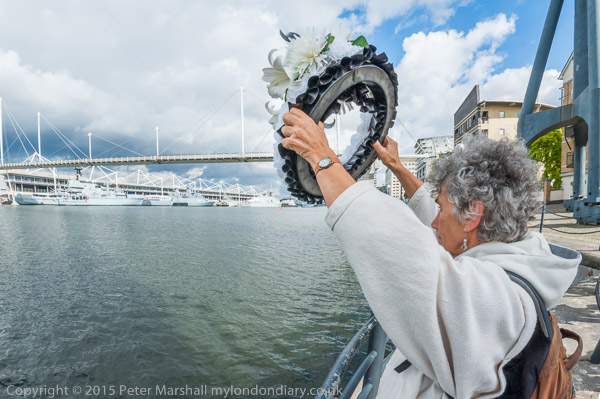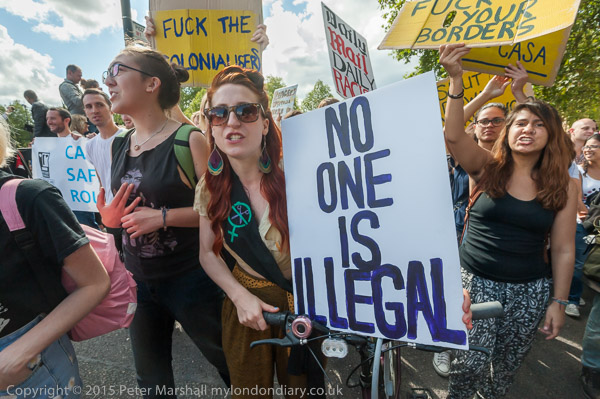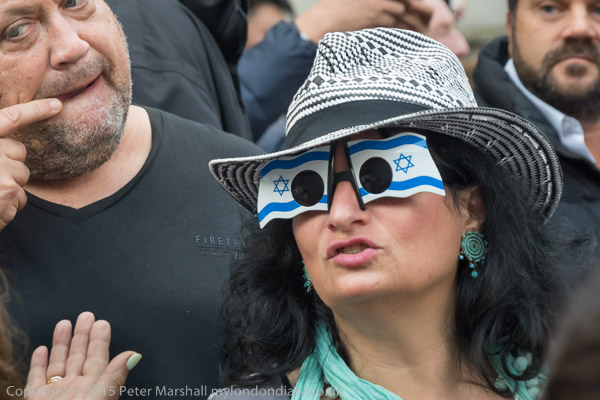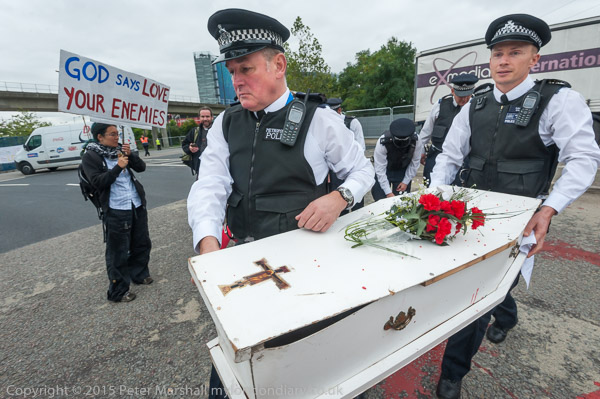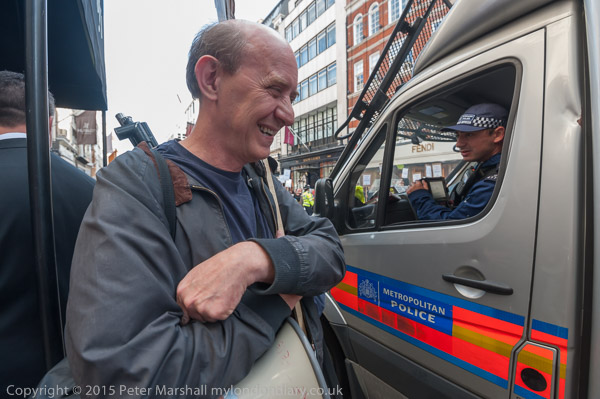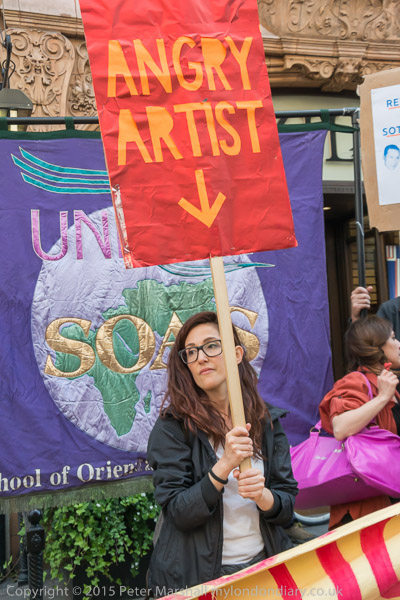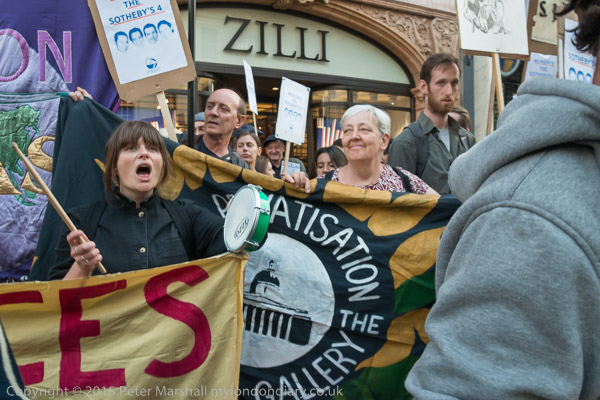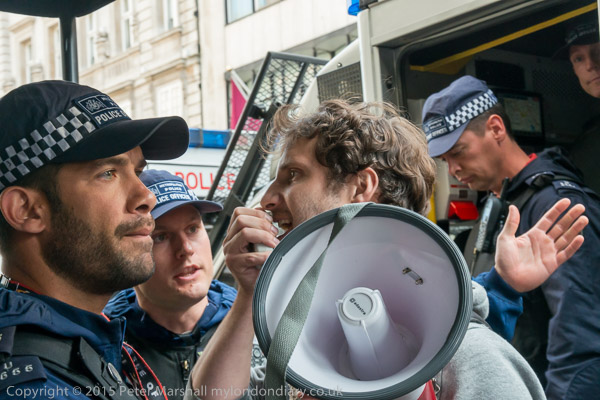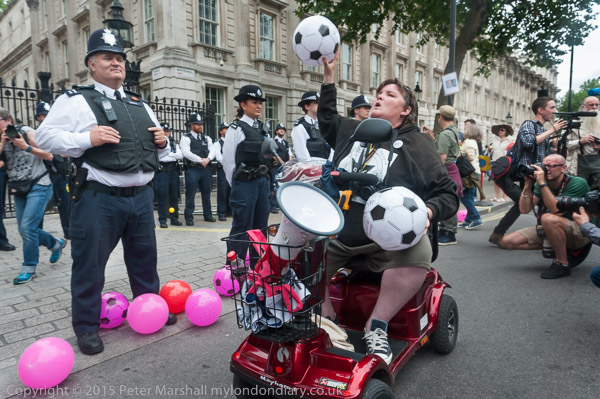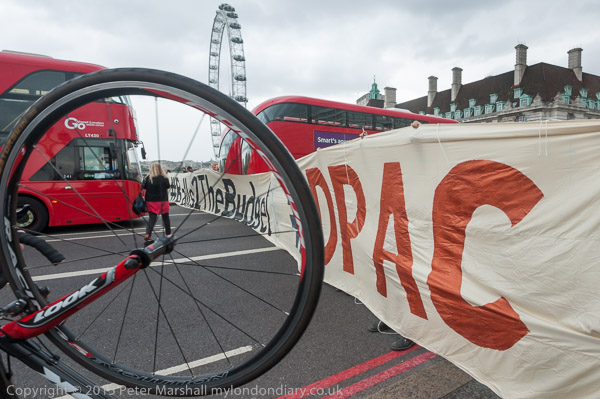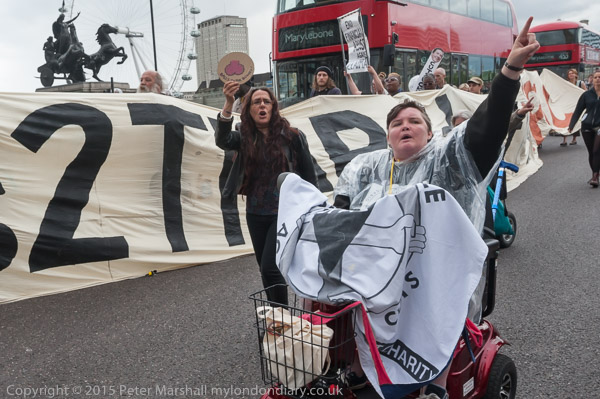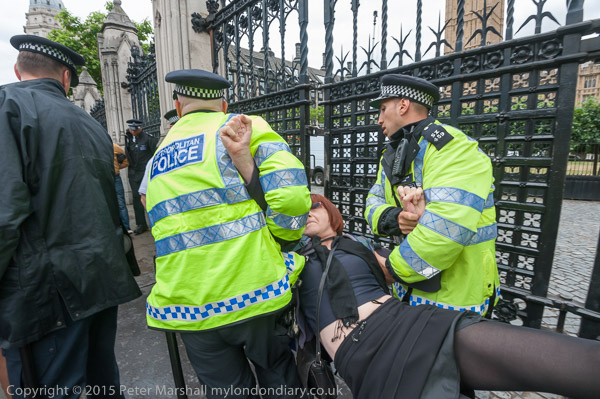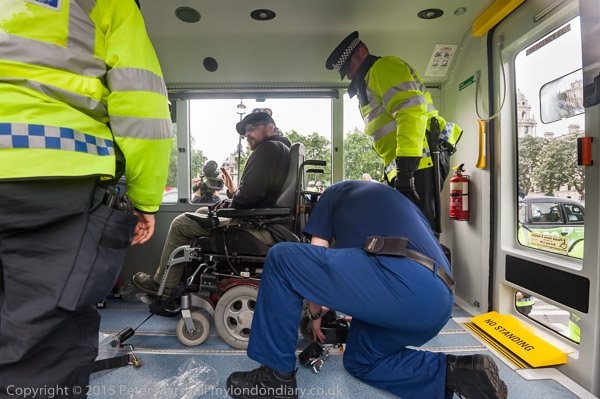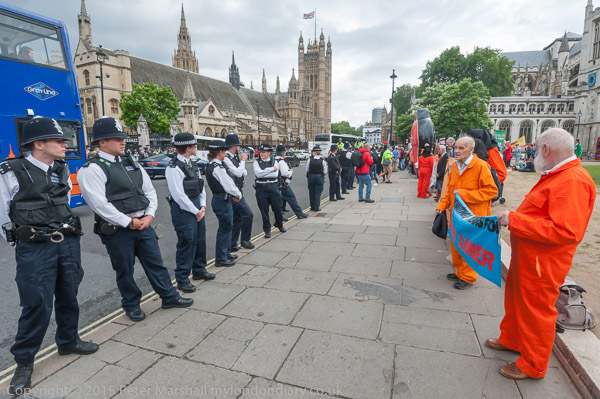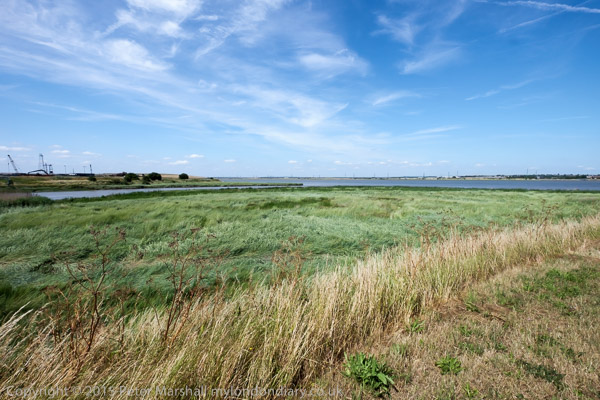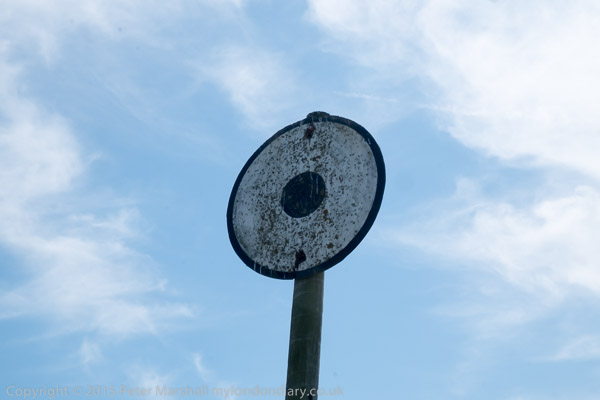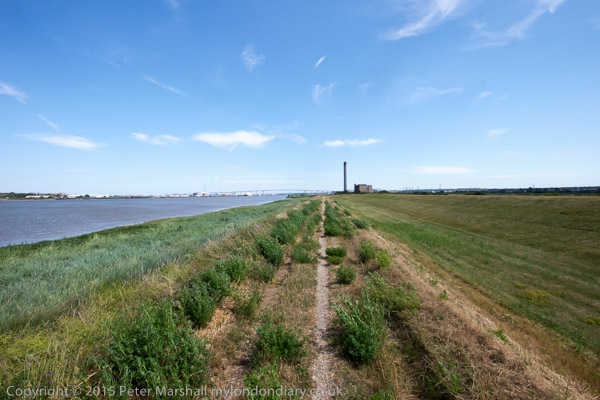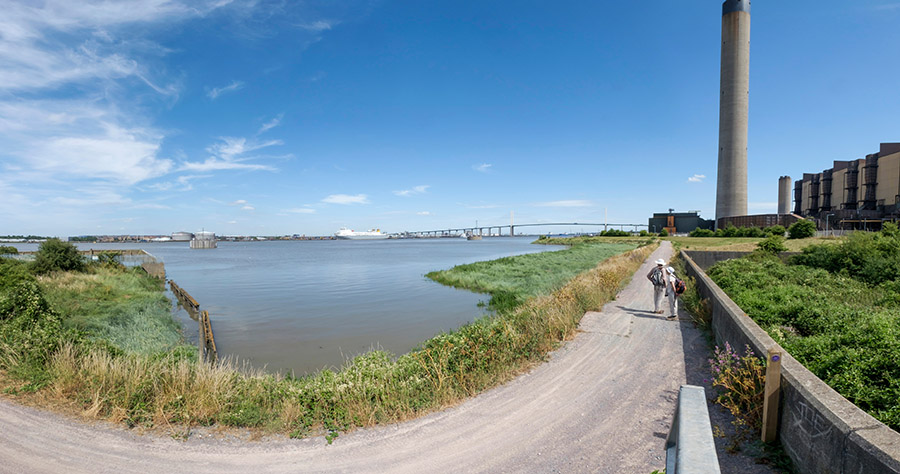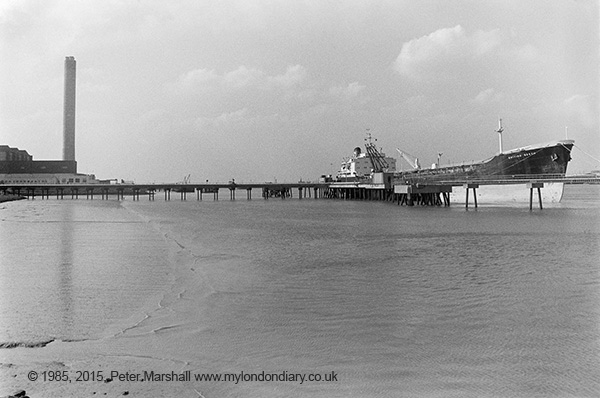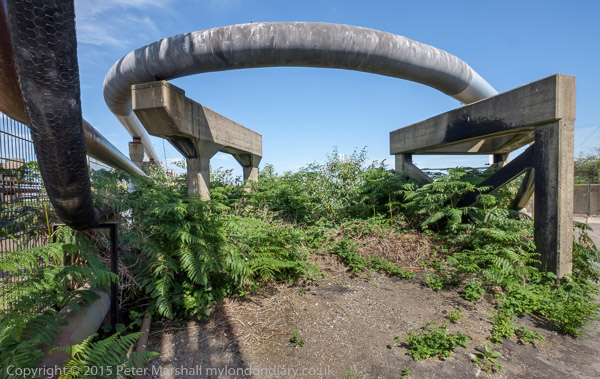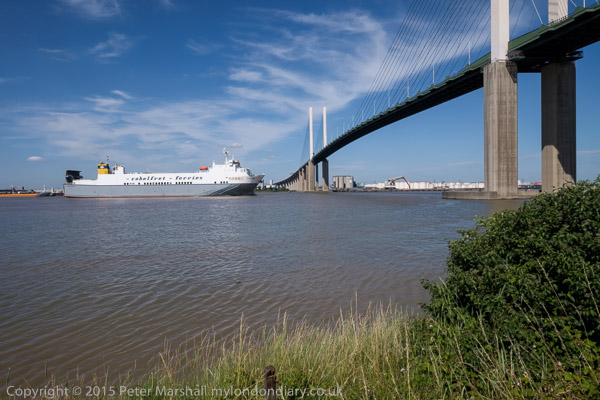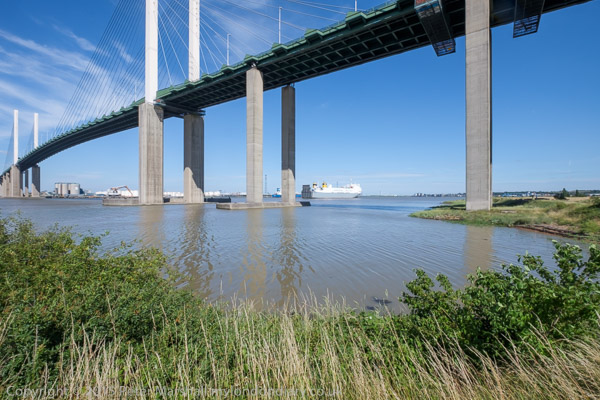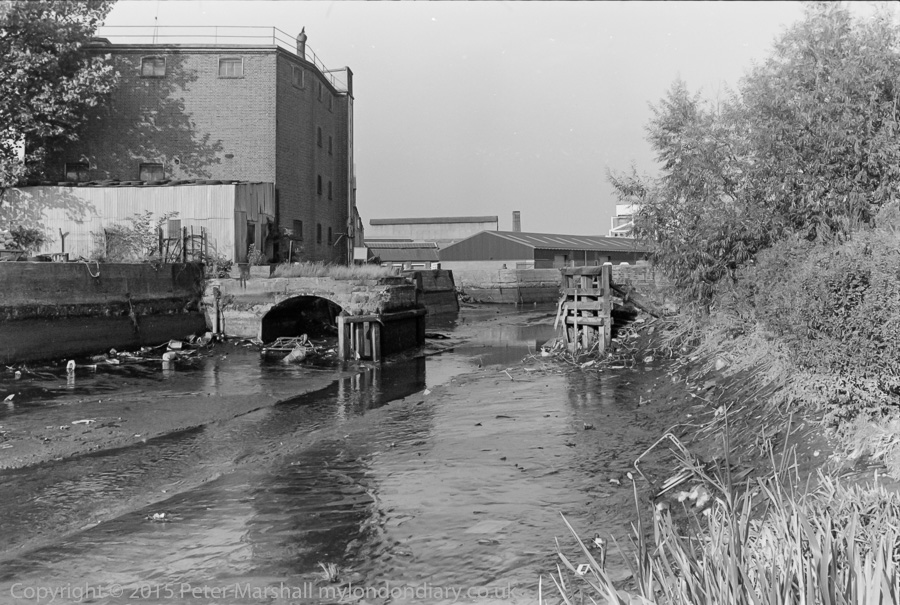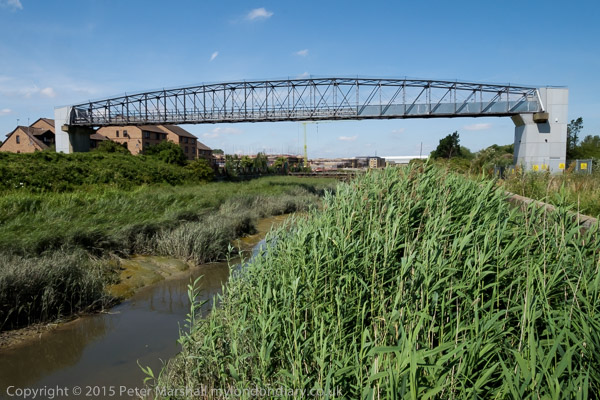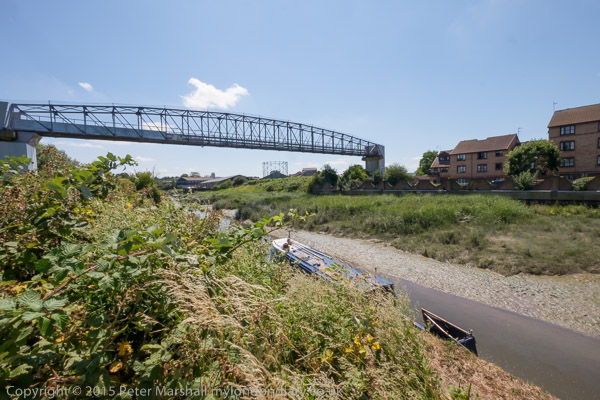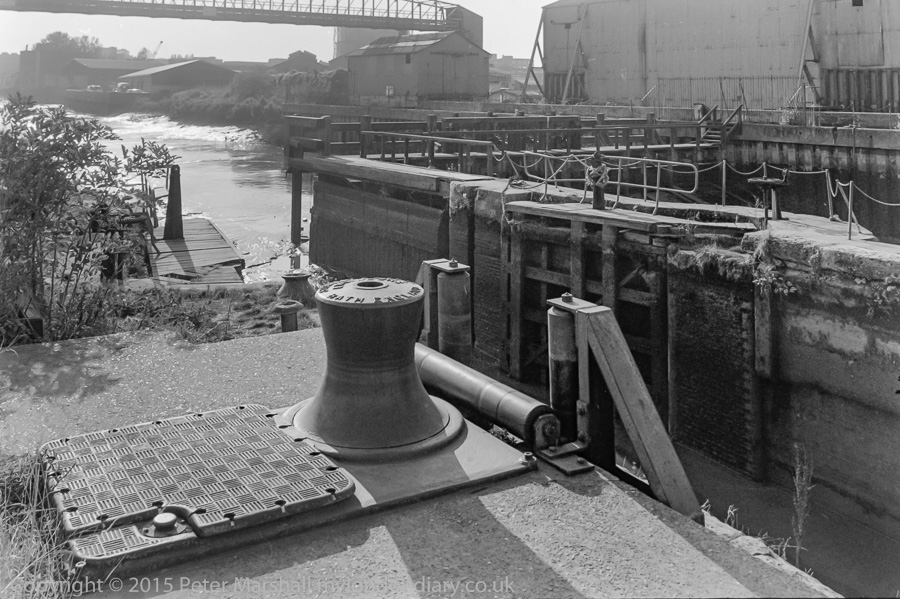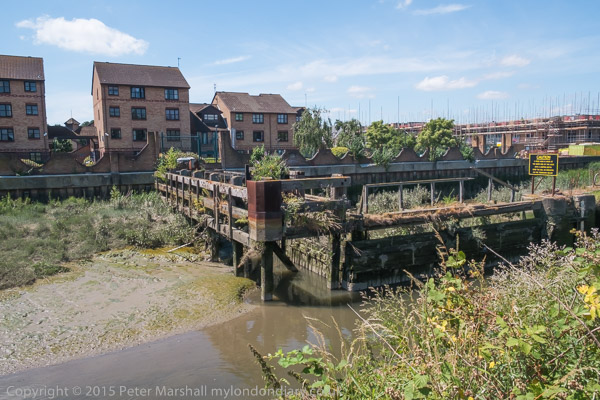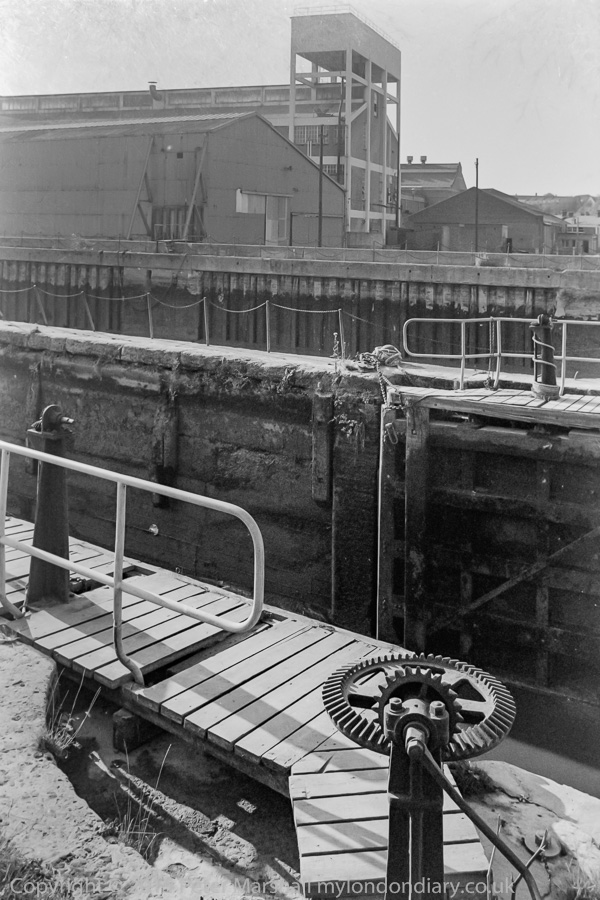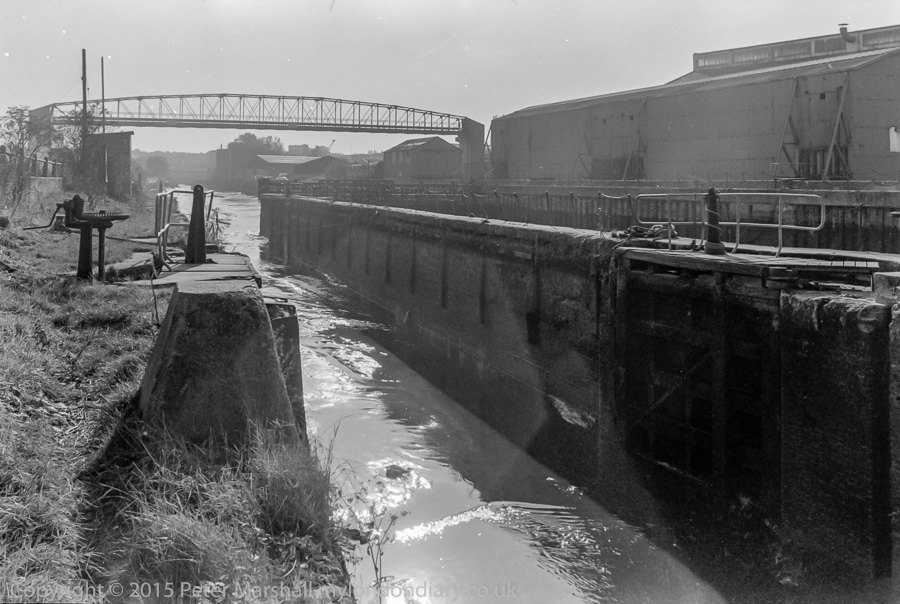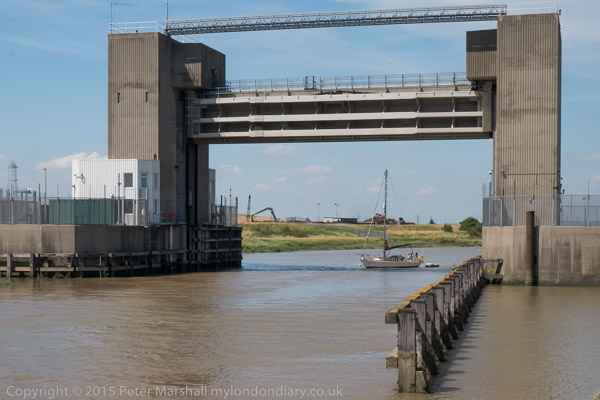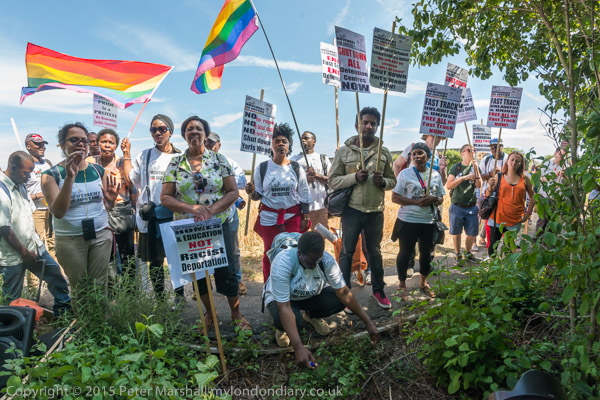
I photographed the protesters from inside the hedge in front of them using the 16mm fisheye
For years our right-wing press (and almost all the UK press is right-wing, owned by a handful of billionaires) have poured hate on immigrants, and successive governments have striven to outdo each other in repressive measures to stop people coming to settle and work in the UK. Unless of course they are extremely wealthy – its only for the rich that we really have freedom of movement around the world any more.
Words such as immigrant, asylum seeker and refugee have become terms of abuse in our racist press – and even in the reporting of more respectable organisations such as the BBC.
There has been an excessive obsession with numbers, and with terms such as ‘flood’ and ‘storm’ and even people who should know better talk and write about ‘illegal immigrants’ when there is no such thing; people may break the law but they are not illegal, as banners on these protests say – No One is Illegal.
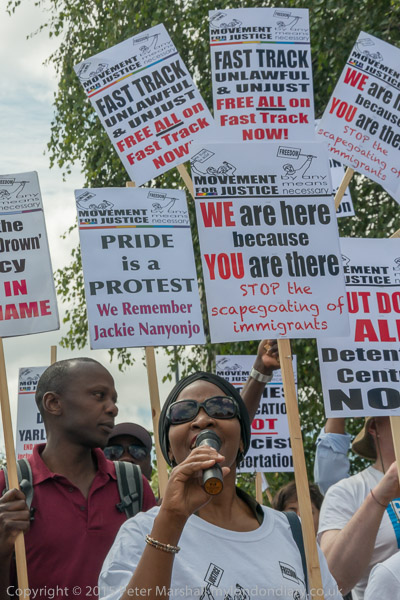
Scare stories are run about huge population increases and the ‘fact’ that the UK is overcrowded. It isn’t, although some parts of London certainly are with tourists, who the government is trying to encourage. There is pressure on services such as schools in some areas – largely because of a failure to direct resources where they are needed in a timely way and the deliberate sabotage of local authority planning with the introduction of ‘free’ schools and academies. The severe housing problem has little or nothing to do with immigrants, but is a long-term problem which has been exacerbated by ‘right to buy’, the end of rent controls and the introduction of housing benefit to subsidise landlords, a failure to implement much-needed land reforms and other government policies. The decimation of our manufacturing industry and the move to a service economy with a proliferation of dead-end low-paid work isn’t a result of migration but deliberate government policies… Immigrants are a simply a convenient scapegoat, without the means to counter their scapegoating.
Except that is through movements such as the Movement for Justice, which continues to fight for them and their rights and occasionally the courts which when people manage to get their cases heard also stand for human rights and the rule of law. That they should have to do so against the Home Office is ridiculous and shameful.
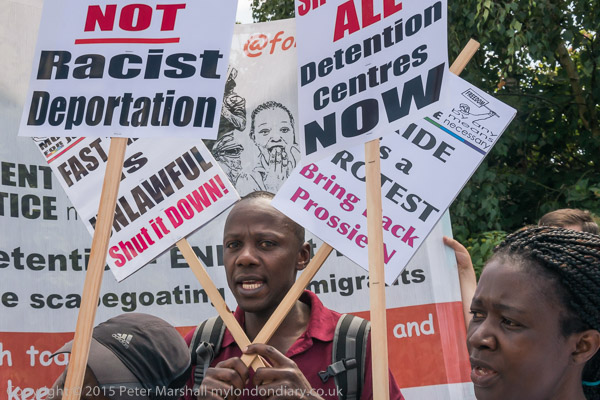
Migrants come here for various reasons, many as some of the placards at the detention prisons at Harmonsdworth & Colnbrook (Now renamed Heathrow Immigration Removal Centre) state ‘We are here because you are there.’ To Britain in particular because of the colonial legacy that built up our great cities – London, Bristol, Liverpool, Glasgow and the rest – and which continues though many international corporations based in London to exploit the labour, raw materials and consumer markets of our former Empire. Asylum seekers come because of wars and conflicts which arise from our invasion of Iraq, our earlier meddling with the politics and boundaries of the Middle East for oil, in Africa for its mineral resources and India for cotton, silk, and other textiles, tea and other goods (not forgetting opium.) And of course there was the trade in slaves, for which Britain perhaps too readily claims kudos for its abolition while refusing to fully acknowledge its involvement.
There is a remarkable inhumanity in sending those arriving to seek asylum, often traumatised by war, beatings, torture or rape, to detention centres. Even more inhumane to try and deport them back to the situations that forced them to flee by ‘fast track’ procedures deliberately designed to give them little chance to prove their suffering. The courts agreed, but still people remain at risk. Our Border Agency and immigration system – and the politicians that direct it – are inherently and institutionally racist and while some staff may work with good intentions (and sometimes are able to force sensible decisions) they do so within an overtly racist framework.
Normally in courts people are innocent until they are proven guilty, but for immigration the reverse applies – their stories are disbelieved and they have to prove they are true. It shouldn’t be like this. People should not be held for long and indefinite periods locked away from friends, and certainly should not be subjected to the rape, sexual abuse and mental torture that goes on in places such as Yarls Wood, private prisons staffed by overworked, underpaid and under-trained security staff.
The protests at Harmondsworth which houses male migrants have been going on for years – I first photographed there back in April 2006. More recently they have been a little overshadowed by MfJ protests at the women’s prison Yarl’s Wood, near Bedford, and by the revelations from inside there with undercover footage shown on TV. With a high profile demonstration due at Yarl’s Wood a few weeks later, there was less promotion of this protest and the numbers were a little lower than at some previous events.
Harmondsworth and Colnbrook prisons are next to each other, set back a hundred yards or so from the Bath Rd (A4) close to the east end of the Colnbrook bypass. A roadway goes down between their high fences to a BT site behind. Since the start of this year the protesters have been stopped from going down this private road and confined to an area in front of the Harmondsworth administration block near the front of the site. It’s hidden from the main road, though there is now in any case relatively little traffic along the A4, with most using the M4. The protests here are not visible to anyone but the prison staff and a few visitors to the prison.
Previously we would see some of the prisoners (our government thinks it makes it sound better to call them detainees) coming to the window and waving, holding up signs and welcoming the the protesters. Now they can’t see the protesters, but they can certainly hear the protest, and outside we can often hear them shouting back. Detainees are allowed mobile phones, and the protesters ring those inside and they can speak to the protest over them, though a mobile on speaker-phone held to a megaphone isn’t always too clear.
Among the protesters are those who have previously been held inside these and other immigration prisons, who also speak against the cruel and racist treatment inside them, the failures to provide proper medical services and the difficulties in trying to put together the case they should not have to make to prove their suffering against a culture of disbelief. While our justice system normally requires people to be proved guilty, under our asylum system they have to prove themselves innocent to avoid being returned to where they fled from oppression. But as the centre’s new name makes clear, this is not about justice, but about removing immigrants.
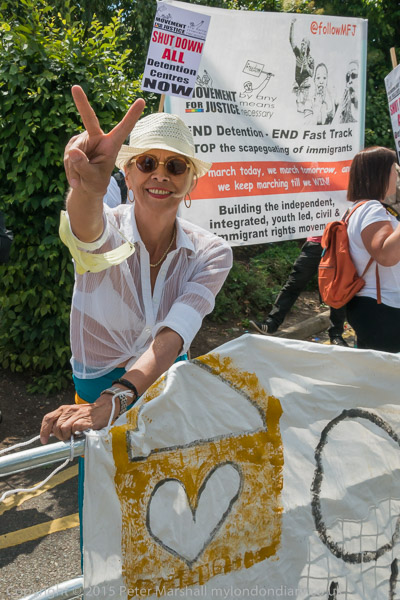
The protest pen gets fairly crowded, and the security staff and police won’t let me photograph from in front of it, though I do so as a matter of principle for a short while until forced to move inside. Telling police that it is a part of their job to facilitate the work of the press (and showing them the police guidance on this) doesn’t get you very far.
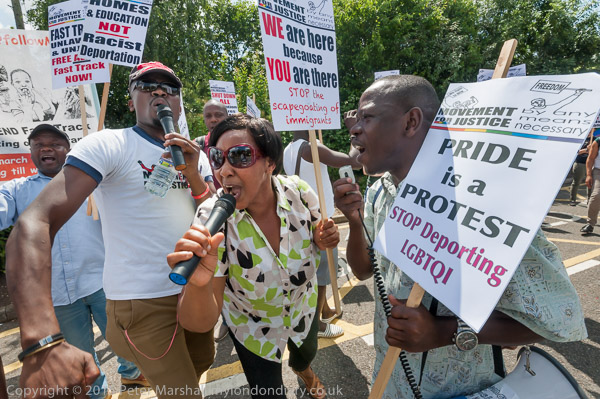
So I find myself working with very wide lenses – the wide end of the 16-35mm and the 16mm fisheye- in the middle of the protesters or sometimes leaning back over the barriers, hoping that being linked together they will not topple. I like working close, particularly with the fisheye, which brings a lot of interaction with the people I’m photographing, but it would be good to have the choice of a slightly longer view. The light’s good and I can use a reasonable shutter speed, needed even with a wide angle when the subjects are close and going across the field of view. It’s good not to use a very fast speed, and to sometimes get a little blurring as people wave their arms and fists, but mostly I’m working in the range 1/250-1/500. Again because I’m often very close I need to stop down for depth of field, and most the pictures are at f8 to f16. I don’t think much about shutter speeds and apertures when working, but set an ISO that gives me roughly what I want – in good light ISO640 or ISO800. Actually in terms of quality working with the D750 and D800E there is relatively little to be gained by any slower speeds, though I do use them for some landscape images.
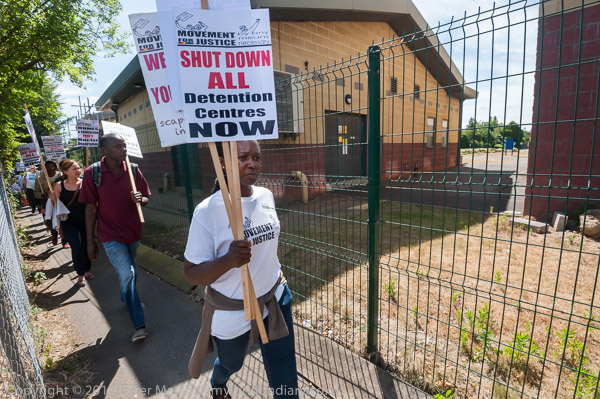
These are noisy protests so that those inside can hear, with drums and horns, but they are also protests with a lot of dancing and walking around in circles in the limited space available. As the protest was reaching its end, it marched out of the entrance onto the Bath Rd and then down a public footpath on the east edge of the Colnbrook prison, stopping in a field beside one of the blocks near the rear of the site. A large hedge and a tall fence behind it stopped us seeing any of the prisoners inside, but they were close enough to be clearly heard, and to join in with the shouting of slogans such as ‘Detention centre – Close them Down!’ with those outside. Police kept the protesters on the path by the hedge, and again the fisheye enabled me to work from inside the hedge looking towards the line of protesters along the edge of the field.
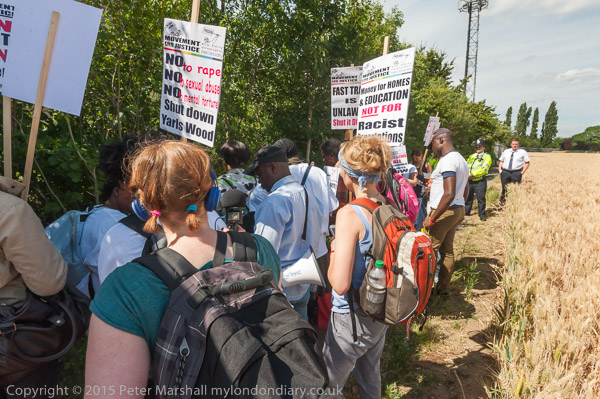
More pictures from the event on My London Diary at Surround Harmondsworth
